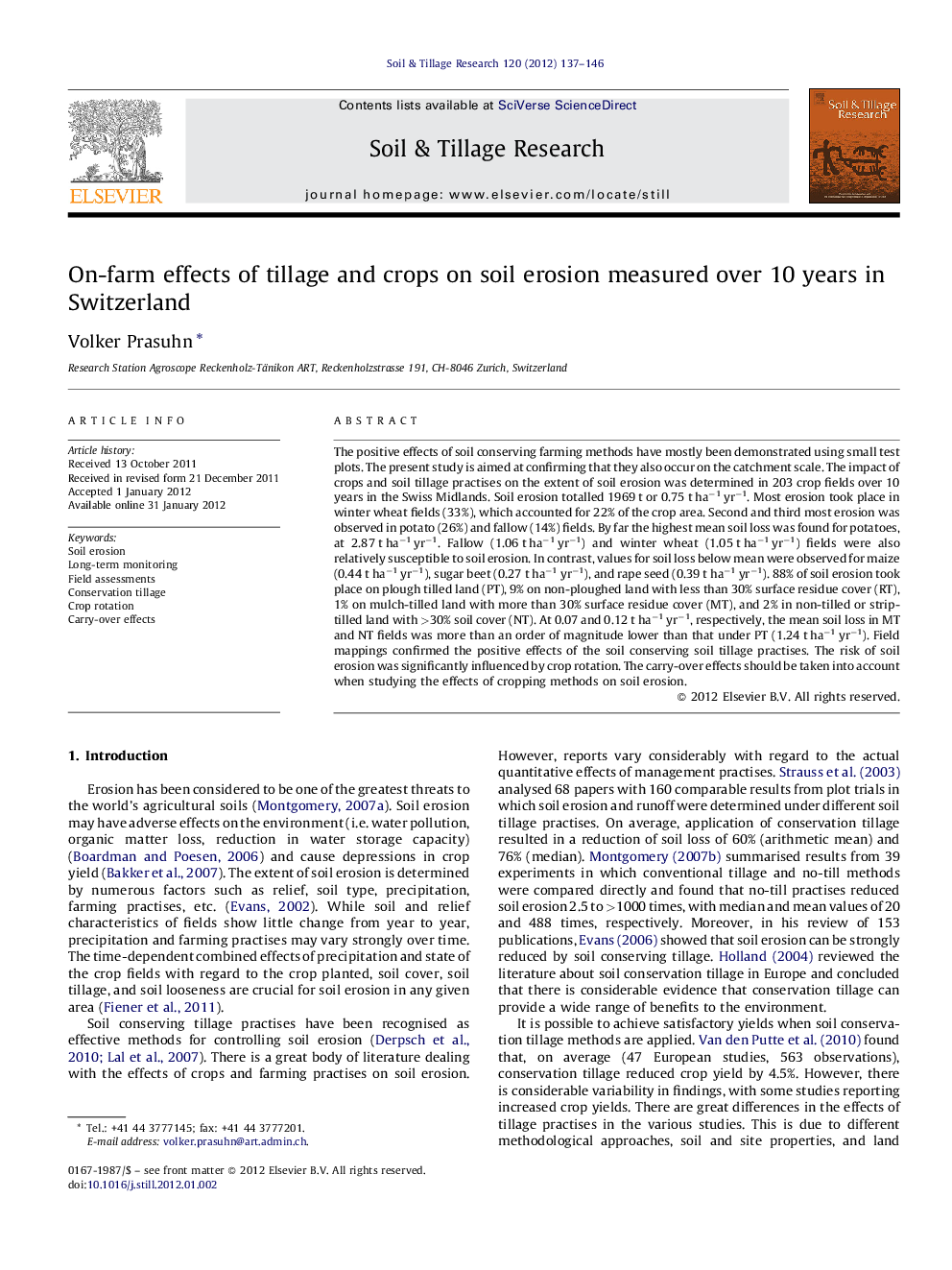| Article ID | Journal | Published Year | Pages | File Type |
|---|---|---|---|---|
| 306007 | Soil and Tillage Research | 2012 | 10 Pages |
The positive effects of soil conserving farming methods have mostly been demonstrated using small test plots. The present study is aimed at confirming that they also occur on the catchment scale. The impact of crops and soil tillage practises on the extent of soil erosion was determined in 203 crop fields over 10 years in the Swiss Midlands. Soil erosion totalled 1969 t or 0.75 t ha−1 yr−1. Most erosion took place in winter wheat fields (33%), which accounted for 22% of the crop area. Second and third most erosion was observed in potato (26%) and fallow (14%) fields. By far the highest mean soil loss was found for potatoes, at 2.87 t ha−1 yr−1. Fallow (1.06 t ha−1 yr−1) and winter wheat (1.05 t ha−1 yr−1) fields were also relatively susceptible to soil erosion. In contrast, values for soil loss below mean were observed for maize (0.44 t ha−1 yr−1), sugar beet (0.27 t ha−1 yr−1), and rape seed (0.39 t ha−1 yr−1). 88% of soil erosion took place on plough tilled land (PT), 9% on non-ploughed land with less than 30% surface residue cover (RT), 1% on mulch-tilled land with more than 30% surface residue cover (MT), and 2% in non-tilled or strip-tilled land with >30% soil cover (NT). At 0.07 and 0.12 t ha−1 yr−1, respectively, the mean soil loss in MT and NT fields was more than an order of magnitude lower than that under PT (1.24 t ha−1 yr−1). Field mappings confirmed the positive effects of the soil conserving soil tillage practises. The risk of soil erosion was significantly influenced by crop rotation. The carry-over effects should be taken into account when studying the effects of cropping methods on soil erosion.
► The mean annual soil loss over 10 years amounted to 0.75 t ha−1. ► Most erosion occurred in winter wheat fields. ► At 2.87 t ha−1 yr−1, highest soil loss took place in potato fields. ► Conserving tillage practises reduced soil loss by more than an order of magnitude. ► The erosion risk was significantly influenced by the crop sequence.
